This “Special Limited Edition” 2-disc set is currently available in either Blu-ray or 4K formats.
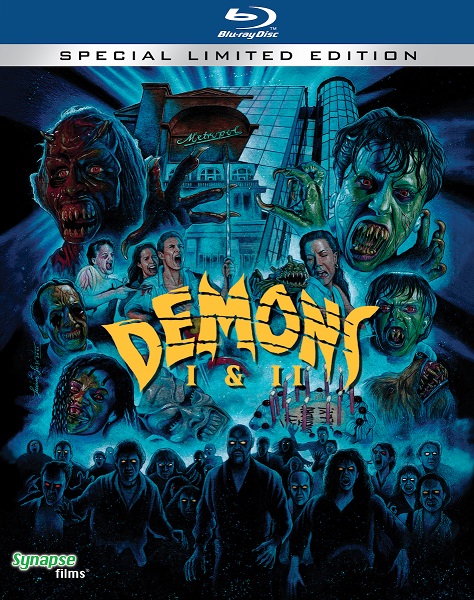
If you were a young horror movie enthusiast in the 80s, the video store was likely your favorite place in the world. Seemingly every week, new genre titles would appear on shelves out of the blue, just waiting to be picked up. Many of the flicks were, well, quite poor, but as a kid it was always hard to resist giving just about any terror title a rental. During this period, the country of Italy had made a name for itself as an impressive producer of genre flicks, thanks to cult filmmakers like Dario Argento (Deep Red, Suspiria) and Lucio Fulci (Zombie, The Beyond). By this period, Argento was so well known that he could sell a horror flick on his name alone.
Demons (1985) and Demons 2 (1986) were directed by Lamberto Bava (son of famed Italian horror movie director Mario Bava), but both were co-written and produced by Dario Argento. In fact, Argento’s name was printed on the film’s poster in bold letters almost as large as the title. The advertising approach ultimately worked and the movies were a hit both in their homeland and abroad (although in North America, its success came primarily through VHS sales and rentals). Now, Synapse Films have decided to give these films an upgrade, releasing a spectacularly sharp 4K UHD set and an equally stunning remastered Blu-ray version. As you might have already guessed, the results are tremendous and this is one of the best disc releases of the year for European horror enthusiasts.
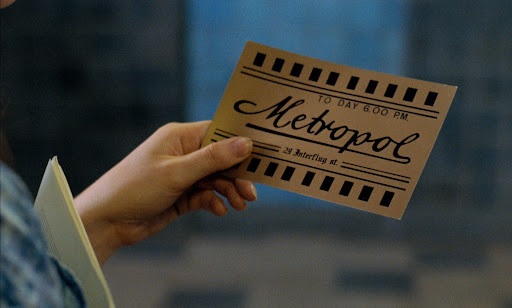
Demons certainly made an impression on me as a youngster. Also known as Demoni, this feature tells the story of two friends (Natasha Hovey and Paola Cozzo) who receive horror movie preview tickets from a strange man (Michele Soavi) at a Berlin train station. They decide to attend the event and meet up with several eccentric patrons, including a pimp and his hookers, a blind man and his adulterous wife, and even some cocaine-sniffing punks. As the movie unspools onscreen, the horror extends into the theater itself. It seems that the movie props on display in the lobby are capable of transforming the theatergoers into real, fast-moving demonic monsters. Those who aren’t turned immediately are forced to fight their way to safety. Even more trouble arises when they realize they have all been locked inside.
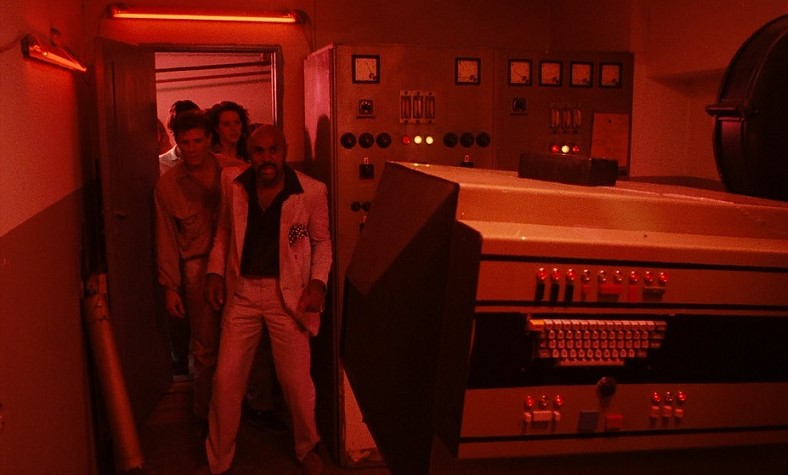
It’s a very simple story with little to no fat on its bones, focused entirely on action as the group are pursued and slain through the cinema while searching for a way out. Some of the acting (or, more to the point, English dubbing) is amusingly less-than-stellar, but the technical specs are excellent and the pacing is great. The movie looks far more slickly shot and edited than other films of its era, with impressive camera moves, as well as strikingly lit scenes with striking colors that bounce off of the screen.
Additionally, Sergio Stivaletti’s make-up effects are memorably gruesome and there are some phenomenal transformation sequences. The movie also includes a few nasty attacks that include tearing flesh and eye-gouging that’ll “gross out” most viewers. Additionally, there’s a memorable climax in which a motorcycle sitting in the lobby is actually used by the protagonists to ride around and fight back against the monsters. The logic of the movie doesn’t hold up at all and it’s extremely gory, but strangely good natured and I can’t help but love the film. This is a wild and crazy ride and the movie works exceptionally well in that regard.
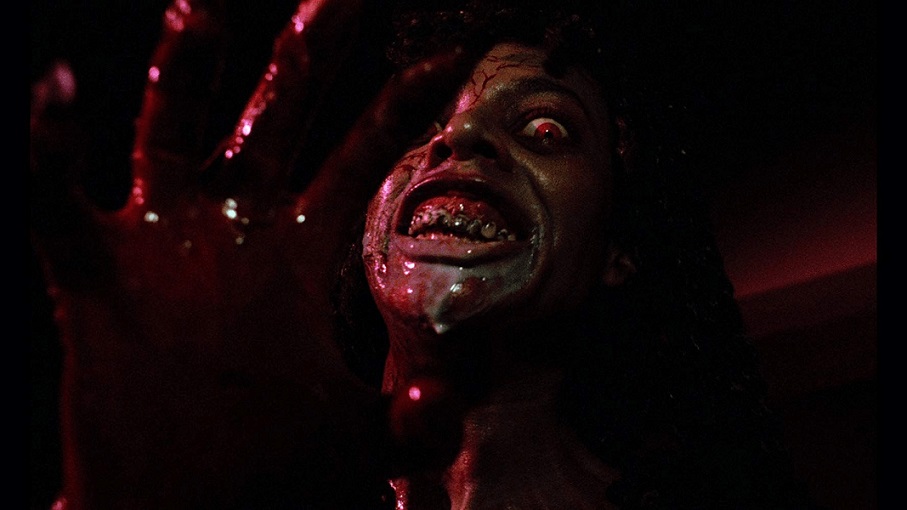
As mentioned, the new transfers are outstanding. This is by far the sharpest I have ever seen this movie appear. And you also get two versions of the film. There is the extra-gory full-length cut in English and Italian, as well as the shorter US version that features some alternate dubbing and sound effects. Obviously, viewers will be purchasing this title to watch the complete versions, but for those who remember renting the movie on VHS, it’s great to have the option of watching the alternate cut that appeared on tape.
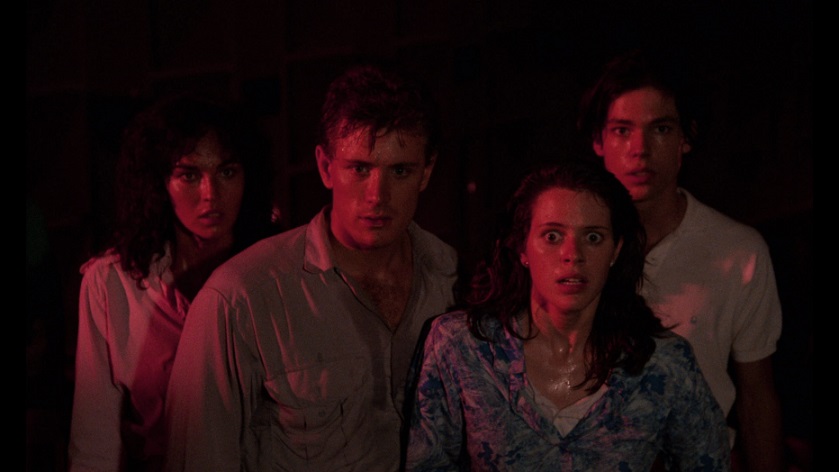
The bonuses are also stellar. There’s a fantastic commentary featuring director Lamberto Bava, special-effects artist Sergio Stivaletti, composer Claudio Simonetti (from the band Goblin) and cast member Geretta Geretta (who plays the first character to turn into a demon and hunt down fellow moviegoers). It’s a friendly and informal chat, but many interesting questions are addressed about the movie and how it was made.
Some of the funny details include the fact that the costuming department had to make far more sets of clothes for the cast of than normal because of the constant blood being sprayed around the set. Bava also talks about how the crew managed to move a large helicopter into a real movie theater to shoot the climax, as well as his experiences working with Dario Argento. Composer Claudio Simonetti comments on his memorable score and what inspired the up-tempo, dance-inspired sound. The track is a great listen and offers plenty of great trivia from the participants.
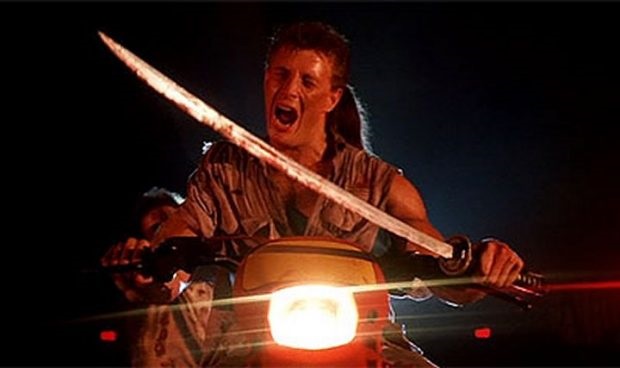
There’s also a second audio commentary featuring the co-hosts of the Hell’s Belles podcast. Clearly, they’re both big fans of the movie and talk about why they enjoy the Demons series so much. They offer their analysis of story elements as well as some of the themes running through the movies. There are some intriguing ideas expressed. Although, while some of the concepts about how the viewing public consumes and are influenced by media may have been intended, other assertions sound like a bit of a stretch. Still, these critics are both entertaining to listen to.
Further extras include an informative visual essay on Dario Argento’s career as a producer and the titles he helped get made (including a couple of his own) under his DAC film company. It largely deals with the filmmaker’s early success and how he used it to help get some projects off the ground, including co-financing George A. Romero’s 1978 zombie epic, Dawn of the Dead. The spot also details his brother Claudio Argento’s experience as a producer and his assistance behind the scenes.
There is also a discussion with Argento himself, who is very frank about his experiences as a producer. Essentially, he notes that he was certainly pleased to help others out in creating their films, but maintains that he never really enjoyed the role of producer. And there is a second featurette with Argento in which he specifically discusses his work on the Demons series. It’s very enlightening and these bonuses give more details about a lesser-known aspect of famed moviemaker’s career. Additionally, there is an interview with composer Claudio Simonetti, another feature on the songs licensed and used in the film, as well as plenty of publicity materials.
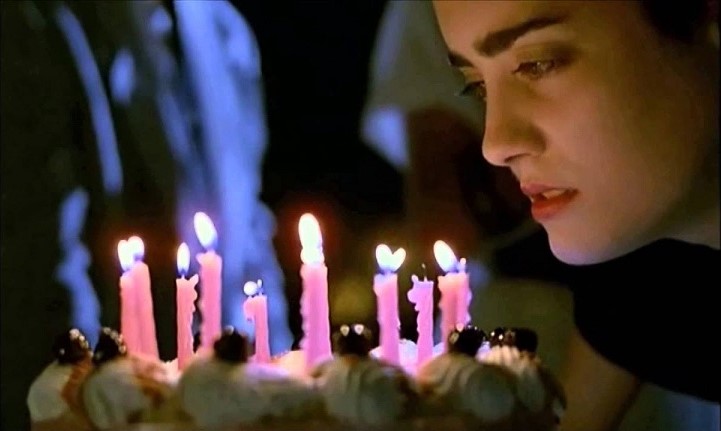
Naturally, the immediate success of Demons warranted a sequel, so the following year Demons 2 arrived on the scene. This time out, the setting is an apartment dwelling, where an all-new set of characters are introduced. The various building residents are throwing parties, or returning home for the evening and having family dinners. When a young woman celebrating her birthday gets annoyed by the possible appearance of an ex-boyfriend at the event, she escapes to another room and watches a television program on demons. Before lone, the monsters are reaching through the TV and entering the real world, where they ultimately go on the rampage.
Once again, there are plenty of outrageous and impressive camera and make-up tricks in this follow-up, including one stand-out moment when a demon pulls themselves out of a TV set. The movie has another killer score and an even stronger soundtrack (that includes bands like The Art of Noise, The Cult, Love and Rockets, The Smiths and many others). However, this movie isn’t quite as effective as its predecessor. There are a great many characters in the story and the movie doesn’t really focus on the protagonists until later in the movie, leaving the story a little adrift in terms of whom we should be following or care about. There’s also less gore in this one, although there are plenty of striking monster effects and dozens of fast-moving demons providing heaps of crazy action.
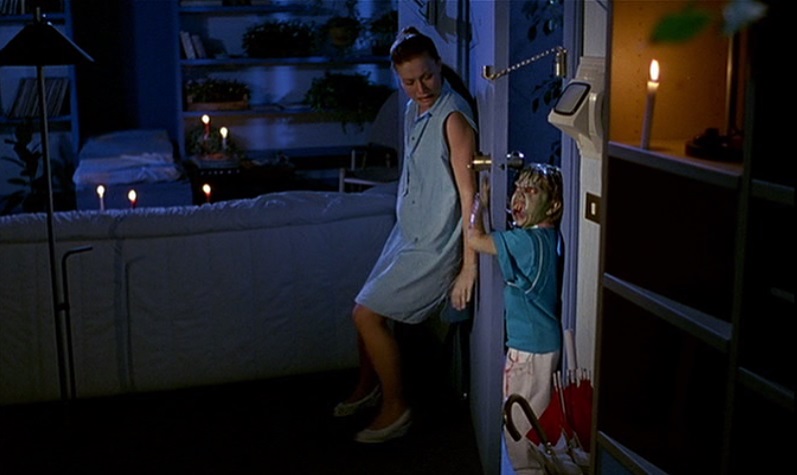
So, even if it isn’t nearly as good, it’s still an enjoyable effort with plenty in it to recommend. And the extras on both discs detailing this title are even more enlightening. There’s an interesting film critic commentary that goes over some of the details in getting this sequel to the screen and providing plenty of background details. The extras also mention that the initial plan for the movie was to continue the story of the survivor from the previous film. Unfortunately, the person had no interest in returning for a follow-up, leaving Argento, Bava and the other writers to come up with an all-new tale on the spot. There were also told by distributors to back off on the gore on this installment, so the demons spout more black fluid than blood this time out.
The disc also includes another talk with Sergio Stivaletti on the effects he created for the film, while Lamberto Bava’s son Roy discusses the legacy of the series. Naturally, Lamberto Bava is also interviewed and provides his experience writing and rushing to get the movie completed for its release. There’s also a visual essay on the use of space and technology in the Demons series by an author and critic. Again, provides an unusual and mildly exaggerated thesis on how the movie separates and different groups of people within the building to comment on isolation. The person also argues that the series possesses a disdain for TV and media, which is a far more convincing pitch.
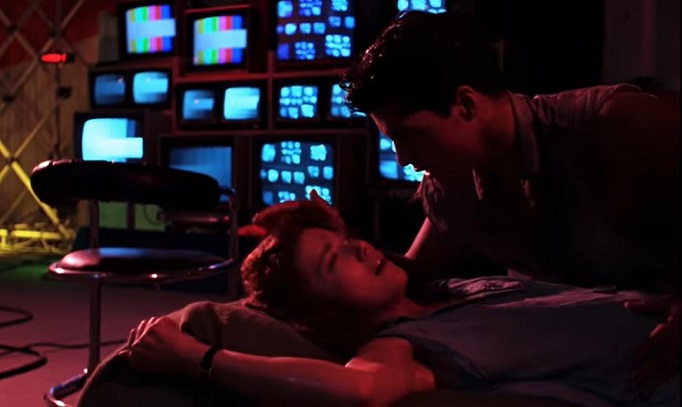
My favorite extra is a discussion with composer Simon Boswell on his score for this title and other Italian genre movies. The English musician describes being asked to help out on the project after frequent Argento collaborators Goblin found themselves with too much scoring work. Boswell discusses the amusing process of working on Italian productions. He was also responsible for the incredible tunes playing in the background of the film. The musician describes trying to move Argento away from prog rock and heavy metal and embracing more the bands he enjoyed and know. This leads to a great story of how he managed to convince Morrissey to allow The Smiths song “Panic” to be used in the film. Then, Boswell elaborates on how his work on Italian genre movies began getting him scoring gigs on Santa Sangre, Shallow Grave, Hardware, Hackers and other movies, including the recent Blithe Spirit.
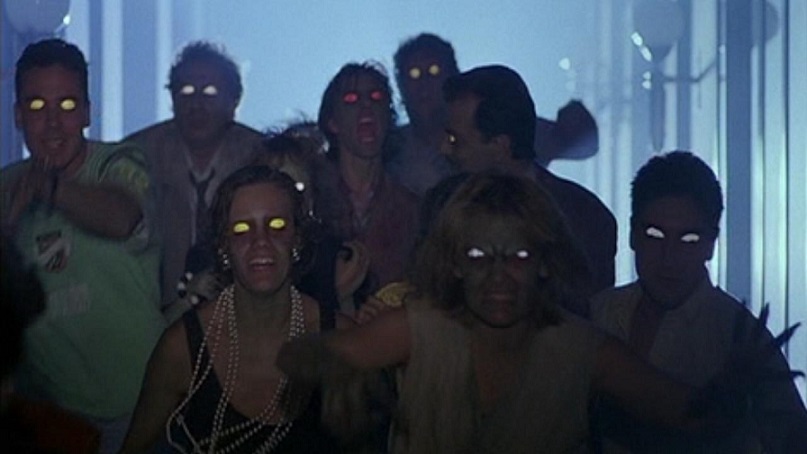
So, if you haven’t already guessed, this is another incredible set from Synapse that comes as highly recommended as can be. I’ve had a great time with these films since my childhood and not only does the new image look outstanding, but the many extras provided fascinating information about the features that I never knew. The movies themselves are still enjoyable and this “Special Limited Edition” 2-disc set expertly shows Demons and Demons 2 in the best possible light. If you’re a fan of foreign genre films, be sure to pick it up.


